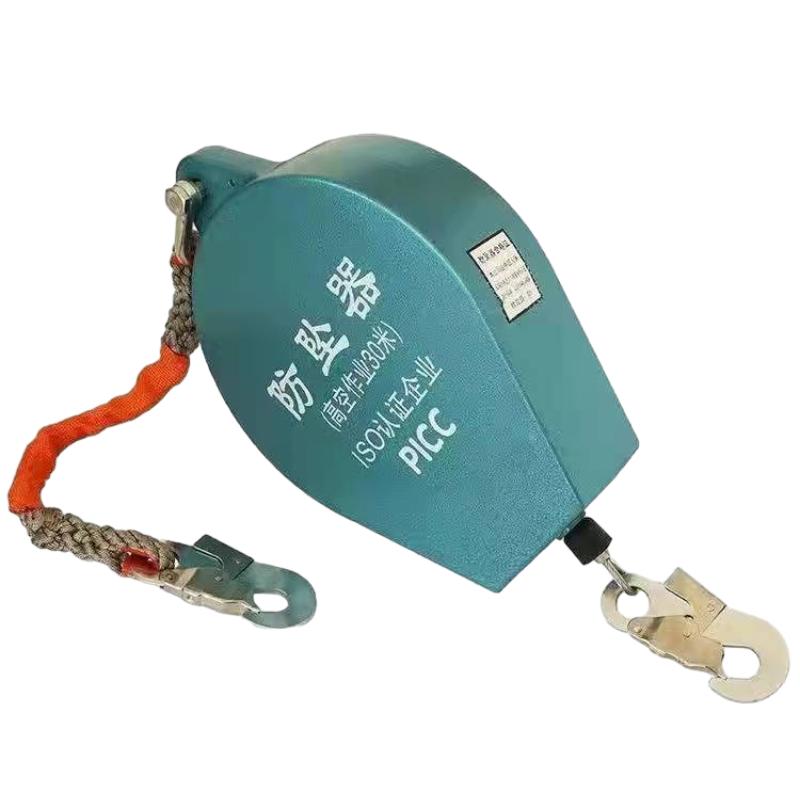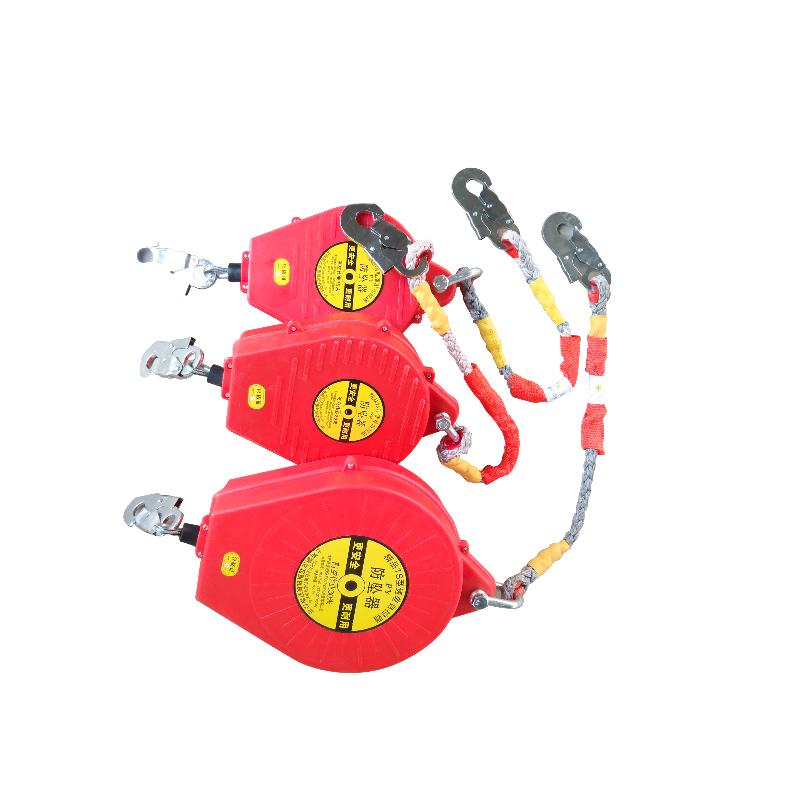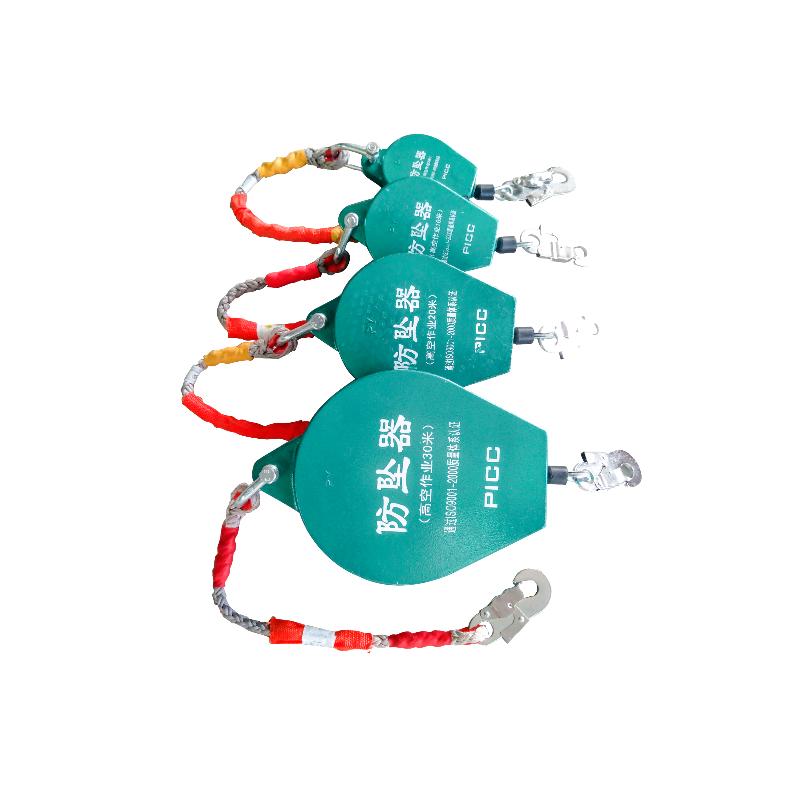


In industrial environments where working at height is a necessity, the integrity of safety systems is paramount. An anti fall arrester, a critical component of personal fall protection equipment (PFPE), is engineered to automatically stop a fall, limiting the impact forces on the worker. These devices are indispensable across numerous sectors, including construction, oil and gas, telecommunications, and utilities, where vertical access and elevated work platforms are common. The design and manufacturing of modern anti fall arrester systems integrate advanced material science, precision engineering, and rigorous testing to ensure unparalleled reliability and worker safety.
The core function of any anti fall protection system is to prevent severe injury or fatality from an uncontrolled descent. This is achieved through mechanisms that rapidly deploy and lock onto a lifeline or rail, arresting the fall within a specified distance and below critical force thresholds. The evolution of fall protection equipment has moved beyond simple ropes and harnesses to sophisticated self-retracting lifelines (SRLs), guided type fall arresters, and energy-absorbing lanyards, each designed for specific risk profiles and operational requirements. Understanding the technical intricacies and application nuances of these devices is crucial for effective risk management and compliance with international safety standards.
This document provides a comprehensive overview of anti fall arrester technology, delving into its manufacturing processes, technical specifications, diverse application scenarios, and the stringent standards that govern its performance. We will also explore industry trends, offer a vendor comparison, discuss customization options, and present real-world case studies to underscore their importance in safeguarding personnel.
The production of a high-performance anti fall arrester is a complex, multi-stage process that demands precision, quality control, and adherence to strict engineering specifications. It combines advanced metallurgy, mechanical engineering, and robust testing protocols to create a life-saving device.
The emphasis on robust materials and precise manufacturing ensures a long service life, typically 10-15 years, depending on environmental conditions and usage frequency. The advantages in typical application scenarios, especially in environments like petrochemical plants or water supply & drainage systems, include superior corrosion resistance, minimal maintenance due to sealed mechanisms, and reliable energy absorption, which translates to enhanced worker safety and operational continuity.

This rigorous process ensures that every fall protection equipment unit is fit for purpose, providing maximum safety and compliance with the most demanding industrial requirements.
The fall protection equipment market is constantly evolving, driven by technological advancements, stricter safety regulations, and a growing emphasis on worker well-being. Several key trends are shaping the future of anti fall protection solutions:
The performance of an anti fall arrester is defined by a series of critical technical specifications. These parameters ensure the device performs reliably under intended conditions and complies with safety standards.
| Parameter | Specification | Relevant Standard |
|---|---|---|
| Lifeline Material | Galvanized Steel Cable (Ø4.8mm), Dyneema Webbing (25mm) | EN 354, ANSI Z359.13 |
| Housing Material | High-Impact Polymer, Aluminum Alloy, or Stainless Steel | EN 360, ASTM F882 |
| Working Length | 2 meters to 30 meters (6 ft to 100 ft) | Manufacturer Specific |
| User Weight Capacity | 100 kg to 140 kg (220 lbs to 310 lbs) | EN 360, ANSI Z359.14 |
| Maximum Arrest Force | Max 6 kN (1350 lbs) | EN 360, ANSI Z359.14 |
| Max Fall Distance | Varies with SRL class, typically less than 0.6m (2 ft) for Class A | ANSI Z359.14 Class A/B |
| Connectors | Self-locking karabiners, rebar hooks (ANSI Z359.12 compliant) | EN 362, ANSI Z359.12 |
| Operating Temperature | -30°C to +50°C (-22°F to +122°F) | EN 360, ASTM D412 |
| Certifications | CE EN 360, ANSI Z359.14, CSA Z259.2.2 | Third-party Audited |
These specifications are critical for selecting the appropriate fall protection equipment for specific industrial applications, ensuring both compliance and worker safety.
The versatility and robust design of anti fall protection solutions make them essential across a diverse range of high-risk industries. Their application extends wherever workers are exposed to the risk of falling from height.
In these scenarios, the technical advantages of advanced anti fall protection systems, such as energy-absorbing capabilities, quick locking mechanisms, and robust environmental sealing, translate directly into enhanced safety, reduced operational risks, and improved productivity.
Modern anti fall arrester technology offers significant advancements over traditional methods, providing enhanced safety, durability, and ease of use. Key technical advantages include:

These technical superiorities directly translate into higher safety margins, reduced operational costs through extended equipment life, and improved worker confidence and productivity in high-risk environments.
Choosing the right provider for anti fall protection equipment requires a careful evaluation of various factors beyond just price. Leading manufacturers differentiate themselves through innovation, material science, adherence to standards, and after-sales support.
| Feature/Criterion | Vendor A (e.g., QYJULI) | Vendor B (Competitor) |
|---|---|---|
| Certifications & Standards | CE EN 360, ANSI Z359.14 (Class A/B), ISO 9001, OHSAS 18001; third-party verified. | CE EN 360, some ANSI Z359.14 (Class B only); internal certifications. |
| Material Durability | 316 Stainless Steel, aircraft-grade aluminum, sealed polymer housing; high corrosion resistance (1000+ hrs salt spray). | Galvanized steel, standard aluminum; moderate corrosion resistance (500 hrs salt spray). |
| Energy Absorption System | Integrated radial braking system with secondary shock absorber, maintaining | External tear-away energy absorber, arrest force up to 8kN. |
| Application Versatility | Rated for leading edge, overhead, and foot-level tie-off. Multi-directional use. | Primarily for overhead use; limited leading edge certification. |
| Service Life & Warranty | 10-year service life, 3-year warranty (extendable with service plan). | 5-year service life, 1-year warranty. |
| Customization Options | Extensive (lifeline length, connector type, housing material, integration with existing systems). | Limited (standard models with few options). |
| Digital Integration | RFID tracking, optional IoT sensors for usage data and fall detection. | Basic serialization for manual tracking. |
When making procurement decisions for fall protection equipment, businesses should prioritize vendors with a proven track record of innovation, robust product testing, comprehensive certifications, and a commitment to long-term support and customization. Vendor A (QYJULI) typically excels in these areas, offering solutions tailored to the most demanding industrial requirements.
Standard anti fall arrester products may not always meet the unique challenges of highly specialized industrial applications. Recognizing this, leading manufacturers offer bespoke solutions designed to integrate seamlessly with specific operational environments and safety protocols.
Customization can involve:
Engaging with a manufacturer that possesses strong R&D capabilities and a flexible manufacturing process is crucial for successful customized anti fall protection deployments. This ensures that the bespoke solution not only meets specific functional requirements but also maintains compliance with all relevant safety standards and regulations.
A major petrochemical facility in the Middle East faced challenges with worker safety during routine maintenance of distillation columns and reactor vessels, which involved extensive work at heights in corrosive and high-temperature environments. Traditional fall protection equipment showed rapid degradation.
Solution: We implemented a tailored system of guided type anti fall arrester devices with stainless steel 316 components and specialized high-temperature polymer casings. The systems were integrated with fixed vertical lifelines on all access ladders and platforms.
Outcome & Feedback: Over five years, the client reported a 0% fall incident rate for workers using the system. "The corrosion resistance and robust build quality significantly reduced our equipment replacement cycles, leading to substantial cost savings. More importantly, our safety record for elevated work improved dramatically, giving our team immense confidence," stated the Head of HSE. The specialized coating on the fall protection equipment provided energy saving by requiring less frequent inspection and replacement in the highly corrosive atmosphere.
A municipal water authority required a safe and efficient method for inspectors to access and descend into large water storage tanks for routine inspections and cleaning. The confined space and potential for slick surfaces posed significant risks.
Solution: Portable tripod systems equipped with 15-meter self-retracting lifelines (SRLs) and integrated rescue winches were deployed. The SRLs featured Dyneema webbing for lightweight handling and a fully sealed braking mechanism resistant to moisture and tank residue.
Outcome & Feedback: The solution provided safe entry and egress, with the added capability for non-entry rescue. "The ease of setup and the reliability of the SRLs transformed our confined space entry procedures. Our teams feel much safer, and the equipment's robust construction means it handles the wet environment without issue," commented the Water Operations Manager. This application specifically highlighted superior corrosion resistance.

These case studies demonstrate the tangible benefits of investing in high-quality, application-specific anti fall protection solutions, proving their value in diverse and demanding industrial environments.
A: Visual inspection should be performed before each use by the competent person. A detailed inspection by a certified inspector is required at least every 6-12 months, or more frequently based on manufacturer's guidelines, usage intensity, and environmental conditions. Any device subjected to a fall must immediately be removed from service.
A: The service life varies by manufacturer and material. For devices like SRLs, it typically ranges from 10 to 15 years from the date of manufacture, provided they pass all intermediate inspections and are not involved in a fall event. Some components, especially webbing, may have shorter lifespans.
A: Most manufacturers do not permit field repairs for critical fall arrest components. If a device fails inspection or has been subjected to a fall, it must be retired from service and replaced or sent to an authorized service center for factory recertification or repair, if permissible by the manufacturer.
A: Key international standards include EN 360 (Retractable Type Fall Arresters), ANSI Z359.14 (Self-Retracting Devices), CSA Z259.2.2, and ISO 10333. Always ensure the product you select is certified to the relevant standards for your region and application.
For standard fall protection equipment, typical lead times range from 2-4 weeks, depending on order volume and specific product configuration. Customized solutions may require 6-12 weeks for design, prototyping, testing, and production. We maintain strategic inventory levels for high-demand items to facilitate rapid deployment for urgent requirements. Our global distribution network ensures efficient delivery to most industrial regions.
We stand by the quality and reliability of our anti fall protection products. All devices are backed by a standard 3-year limited warranty against manufacturing defects in materials and workmanship. Extended warranty options and comprehensive service plans are available to provide additional peace of mind and minimize total cost of ownership.
Our commitment extends beyond product delivery. We offer comprehensive after-sales support, including:
The deployment of advanced anti fall arrester systems is not merely a regulatory requirement but a fundamental investment in worker safety, operational efficiency, and corporate responsibility. From the meticulous manufacturing process to the integration of smart technologies, every aspect of modern fall protection equipment is engineered to provide maximum reliability and peace of mind. By understanding the technical specifications, industry trends, and the capabilities of trusted vendors, businesses can implement robust anti fall protection strategies that safeguard personnel and optimize productivity across diverse and challenging industrial landscapes.



